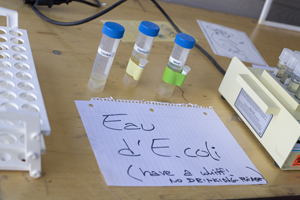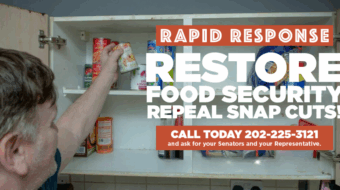
Two people have died and another 28 are ill after eating ground beef contaminated with E. coli bacteria.
The deaths underscore the failures of the nation’s food safety system, which was gutted under the Bush administration. And they highlight the timeliness of new efforts in Congress to ramp up oversight of the food industry and enforcement of safety standards.
The two deaths were in upstate New York and New Hampshire. The New Hampshire Department of Health and Human Services announced the New Hampshir death on Saturday. The Centers for Disease Control and Prevention announced the New York death.
The company that produced the ground beef, Fairbanks Farms, of Ashville, N.Y., recalled 545,699 pounds of the meat on Saturday.
Last week, South Shore Meats Co. of Brockton, Mass., also recalled ground beef products after more than 20 Rhode Island schoolchildren and adults became ill following a mid-October visit to a camp in Plymouth, Mass., the Boston Globe reported. Ground beef from the camp tested positive for E. coli.
Twenty-eight people in 12 states from California to Maine are now infected with strains of E. coli linked to ground beef, the CDC said yesterday.
Sixteen of those people are in hospitals and three have developed kidney failure as a result of the contamination.
E. coli is a potentially deadly bacterium that can cause bloody diarrhea, dehydration and kidney failure. The very young, older people and people with weak immune systems are the most susceptible. E. coli is dangerous even in microscopic amounts and can be spread from utensils or cooking surfaces to other foods.
The Fairbanks Farms meat linked to the two deaths is ground beef or packaged beef patties that were made from Sept. 14 to Sept. 16. The meat was distributed to major East Coast supermarkets including Shaw’s, Giant, BJ’s, Price Chopper and Trader Joe’s.
Although the ground beef is no longer in stores, people could still have it in their freezers.
This summer, the House of Representatives passed HR 2749, the Food Safety Enhancement Act of 2009, which requires more inspections and oversight of the food industry and gives the government new authority to order food recalls.
The companion bill, S 510, is being considered by the Senate Health, Education, Labor and Pensions committee.
The food safety advocacy group Safe Tables Our Priority notes that currently, the Food and Drug Administration inspects U.S. food facilities about once every 10 years,
“To this day,” the group’s executive director, Donna Rosenbaum, told The New York Times, “contamination problems are not found by any checks on the products by companies. They’re found when people get sick, and that’s a failure in the system.”
Under the Bush administration, the agencies that are supposed to regulate our food safety, the Food and Drug Administration and the Department of Agriculture, were gutted. People beholden to the corporations they were supposed to regulate were put in charge of those agencies, and the number of inspections was cut by 70 percent. Just last year, the Agriculture Department’s Food Safety and Inspection Service removed on-the-line meat inspectors, thereby increasing the risk of food-borne illnesses.
Earlier this year, President Obama named a Food Safety Working Group, charged with revamping the system. It is chaired by Health and Human Services Secretary Kathleen Sebelius and Agriculture Secretary Tom Vilsack. Participating agencies include the Food and Drug Administration, the Food Safety and Inspection Service, the CDC, the Departments of Homeland Security, Commerce and State, the Environmental Protection Agency, and several White House offices.
In July, the working group issued a report saying the current U.S. food safety system “is hamstrung by outdated laws, insufficient resources, suboptimal management structures, and poor coordination across agencies and with states and localities.”
“Too often in the past, the food safety system has focused on reacting to problems rather than preventing harm in the first place,” the working group said.
It recommended that the federal government “move aggressively” to implement “rigorous standards for food safety,” and “prioritize crucial inspection and enforcement activity.”
Photo: http://www.flickr.com/photos/lizadaly/ / CC BY 2.0










